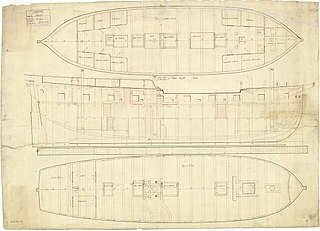Cyrus was a whaler launched at Salem in 1800. She performed one whaling voyage for French owners before a British letter of marque captured her in 1803. From 1804 on, she performed 17 whaling voyages for British owners in the almost half a century between 1804 and 1853. The first five were for Samuel Enderby & Sons. Between 1 August 1834 and 2 June 1848 her captain was Richard Spratly, namesake of Spratly Island and the group of islands and reefs known as the Spratly Islands. She apparently made one last voyage in 1854, but then no longer traded. She was last listed in Lloyd's Register in 1856.
Britannia may refer to a number of ships:
Samuel Enderby & Sons was a whaling and sealing company based in London, England, founded circa 1775 by Samuel Enderby (1717–1797). The company encouraged their captains to combine exploration with their business activities, and sponsored several of the earliest expeditions to the subantarctic, Southern Ocean and Antarctica itself.
Speedy was a whaler launched on the Thames in 1779. She also made voyages to New South Wales, transporting female convicts in 1799. She made two voyages transporting slaves in 1805 and 1806, and was captured in January 1807 on her way into London after having delivered her slaves to Antigua in 1806.
A number of sailing ships have been named Ocean.

HMS Rattler was a 16-gun Echo-class sloop of the Royal Navy. Launched in March 1783, she saw service in the Leeward Islands and Nova Scotia before being paid off in 1792 and sold to whaling company Samuel Enderby & Sons. She made two voyages as a whaler and two as a slave ship before she was condemned in the Americas as unseaworthy in 1802.
Several vessels have borne the name Kitty, a diminutive for the name "Catherine", and a name in its own right:
Georgiana was built in Mexico in 1800, captured in 1801, and became a whaler for Samuel Enderby & Sons. She made three whale fishing voyages for them. She then became a merchantman, trading with Curaçao, and later, Argentina. She was last listed in 1821.
Crescent was launched at Rotherhithe in 1790. She initially traded with the Levant, particularly Smyrna. After the outbreak of war with France she may have tried her hand as a privateer. In 1796–1798 she made a voyage to the East Indies, almost surely on behalf of the British East India Company (EIC). A French privateer captured her but the British Royal Navy quickly recaptured her. In 1802-1804 she made one voyage as a slave ship carrying slaves from West Africa to Jamaica. In 1805 she became a whaler. She was lost in 1807 off Patagonia while homeward bound from her first whaling voyage.
Mary was launched at Liverpool in 1806. She made one voyage as a slave ship before the British slave trade ended, during which voyage she engaged in a notable blue on blue action with two British warships. She then traded with Haiti and Brazil, and possibly made one voyage to India under license from the British East India Company (EIC). She then became a whaler and was lost in 1825 in the Pacific on the second of two whaling voyages.
Several ships have been named Robert.
Sarah was launched at Hartlepool in 1800. Between 1807 and 1813 Sarah made two voyages as a whaler. As she was coming home from her first whaling voyage a French privateer captured her, but a British privateer recaptured her. After her whaling voyages Sarah became a transport, a West Indiaman, and traded with North America. She was last listed in 1826.
Several vessels have been named Paragon:
Governor Dowdeswell was launched in 1798 in Spain or France under another name. The British captured her in 1800. New owners in Liverpool renamed her and employed her as a slave ship for five slave trading voyages. With the end of the British slave trade, new owners employed her as a whaler. She made one complete whaling voyage but was captured during her second whaling voyage.
Several vessels have been named Cumberland for the county of Cumberland:
Otter was launched in America in 1799. She appeared in the Register of Shipping in 1809, after she had already made the first of three voyages as a whaler. She then started trading with the Mediterranean where the French captured her in 1813.
Swan was launched at Flensburg in 1806. By 1808 Samuel Enderby & Sons had acquired her. Between 1808 and 1810 she made one whaling voyage during which she rediscovered Bouvet Island. Enderby's sold her and from 1811 on she traded widely. Then in 1823 Enderbys repurchased her and she made two more whaling voyages for them. She then became a West Indiaman and was last listed in 1833.
Several ships have been named Ceres for Ceres, the Roman goddess of agriculture:
This page is based on this
Wikipedia article Text is available under the
CC BY-SA 4.0 license; additional terms may apply.
Images, videos and audio are available under their respective licenses.



